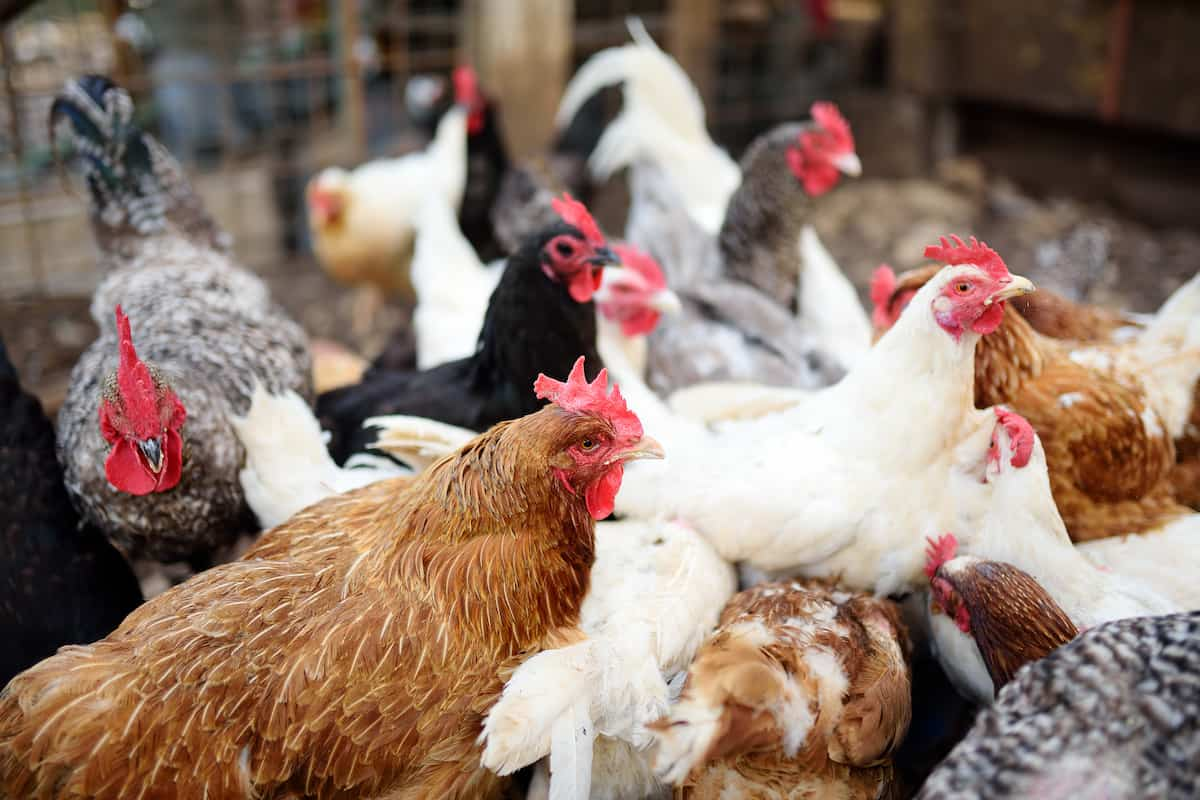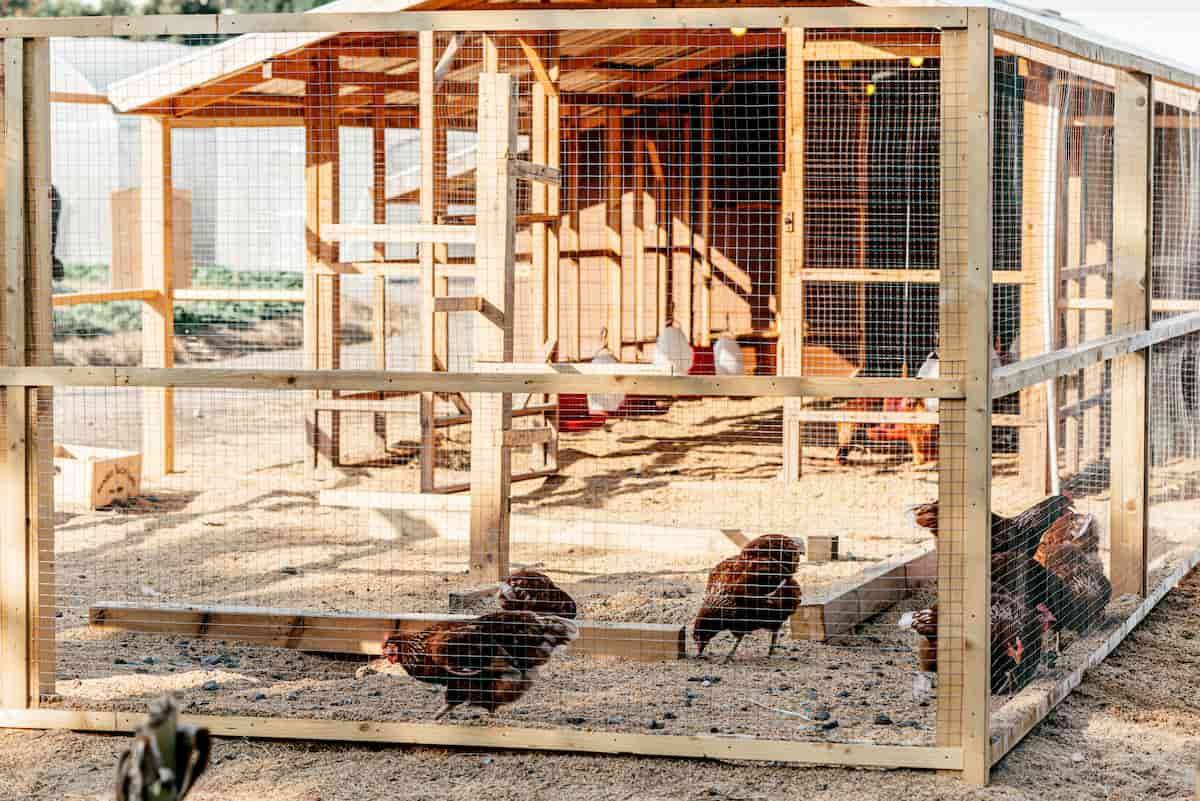Chicken farming is a lucrative business with a growing demand for poultry products worldwide. This comprehensive guide outlines 15 steps to help you start your own chicken farm and maximize your profits. From selecting the right breed and location to setting up marketing strategies, these steps will provide you with a solid foundation for a successful venture in chicken farming. Below we learn the requirements for poultry farming, poultry farming for beginners, poultry farming profit calculation, and the costs involved.

How to Start Chicken Farming
Research the Industry
Before starting a chicken farm, it’s crucial to research the industry to understand the demand, competition, market trends, and potential challenges. Analyze your local market and study successful farms in your area to gain insights into best practices and strategies. Acquiring knowledge about the industry will help you make informed decisions and set realistic expectations.
Choose a Niche
There are several niches in the chicken farming industry, including egg production (layers), meat production (broilers), and breeding (parent stock). Determine your niche based on your interests, market demand, and available resources. Each niche requires different resources, management practices, and levels of expertise.
Develop a Business Plan
A well-crafted business plan is essential for the success of your chicken farm. The plan should outline your objectives, target market, financial projections, operational plan, and marketing strategies. It will serve as a roadmap for your business and help you secure financing from banks or investors.
Select the Right Breed
Choose the appropriate breed for your niche. Consider breeds like White Leghorns, Rhode Island Reds, and Sussex for egg production. For meat production, opt for breeds such as Cornish Cross, Red Rangers, and Freedom Rangers. Select a breed known for high productivity, good feed conversion rates, and disease resistance.
Find a Suitable Location
Select a location with adequate space, good ventilation, and protection from predators. Consider factors such as proximity to your target market, access to clean water, and availability of feed suppliers. Ensure the location complies with local zoning regulations and environmental laws.
Design and Construct the Chicken Coop
Design a chicken coop that meets the specific needs of your chosen breed and niche. The coop should provide ample space, proper ventilation, and protection from extreme weather conditions. Include separate areas for nesting, feeding, and waste management. Invest in quality materials and construction to ensure durability and long-term functionality.
Purchase Equipment and Supplies
Acquire the necessary equipment and supplies for your farm, such as feeders, waterers, nests, egg collection trays, and heating systems. Choose equipment that is easy to clean, maintain, and replace when needed. Investing in quality equipment will help you maintain a healthy and productive flock.
Secure Financing
Starting a chicken farm requires a significant financial investment. Determine your startup costs, including land, construction, equipment, and initial livestock purchases. Think about applying for grants, loans, and forming partnerships with investors.
Obtain Licenses and Permits
Before commencing operations, obtain all required licenses and permits from local authorities. Ensure that you comply with regulations related to zoning, building codes, waste management, and animal welfare.
Develop a Feed and Nutrition Plan
A proper feed and nutrition plan is vital for the health and productivity of your flock. Consult with a veterinarian or poultry nutritionist to develop a balanced diet that meets the nutritional requirements of your chosen breed. Regularly monitor the quality and quantity of feed to prevent malnutrition and disease.
In case you missed it: Ultimate Guide to Shamo Chicken Breed: Characteristics, Care, Feed, and Care

Implement Biosecurity Measures
Implement biosecurity measures to protect your flock from diseases and pests. Establish strict visitor protocols, limit farm access, and maintain a clean and sanitary environment. Regularly monitor your flock for signs of illness and consult a veterinarian about developing a comprehensive health management plan.
Establish a Breeding Program (If Applicable)
If you’re focusing on breeding, establish a strong breeding program to maintain genetic diversity and improve desirable traits in your flock. Choose high-quality parent stock and implement controlled mating practices. Record and monitor the performance of your breeding stock to continuously refine your program.
Implement a Vaccination Program
Protect your flock from common diseases by implementing a vaccination program. Consult a veterinarian to determine the appropriate vaccines and schedule for your breed and region. Administer vaccines correctly and maintain accurate records to ensure the health of your flock.
Monitor Growth and Performance
Regularly monitor the growth and performance of your chickens by measuring parameters such as weight gain, egg production, and feed conversion rates. Use this data to make informed feed, breeding, and flock management decisions. Comparing your results to industry benchmarks can help identify areas for improvement.
Optimize Lighting and Temperature
Lighting and temperature play a crucial role in the productivity and well-being of your chickens. Ensure your coop has an appropriate lighting schedule miming natural daylight patterns. Install a temperature control system to maintain a comfortable environment, especially during extreme weather conditions.
Pest and Predator Control
Implement pest and predator control measures to protect your flock from harm. Regularly inspect your coop and surrounding areas for signs of rodents, insects, or other pests. Seal entry points, use traps, and consider employing natural predators, such as barn owls, to keep pests under control. Secure your coop with fencing and predator-proof latches to prevent attacks from larger predators.
Profitability
The profitability of a chicken farm largely depends on various factors such as farm size, niche, location, and management practices. However, some general figures can help illustrate the potential earnings in this industry. For instance, a medium-sized chicken farm with 5,000 layers can produce approximately 4,000 eggs daily, assuming an 80% laying rate. At a conservative price of $0.10 per egg, this farm could generate daily revenue of $400, amounting to $146,000 annually.
Similarly, a broiler farm with 10,000 birds, assuming a weight gain of 5 pounds per bird and a selling price of $1.00 per pound, can yield $50,000 in revenue per cycle. With the potential for multiple cycles per year, a broiler farm can generate substantial income. To maximize profitability, chicken farmers must continuously optimize their operations, reduce costs, and adapt to changing consumer preferences and market trends.
In case you missed it: Ultimate Guide to Araucana Chicken Breed: Characteristics, Feed, and Care

Conclusion
Starting a chicken farm is a rewarding venture that can provide you with a stable source of income and contribute to food security in your community. Remember to continuously evaluate and adapt your strategies to keep up with market trends and maintain a competitive edge in the industry.
- Feed Your Flock for Less: Top 10 Tips to Save on Chicken Feed
- Ultimate Guide to Ossabaw Island Hog: Breeding, Raising, Diet, and Care
- Hatching Answers: The Top 10 Reasons Your Chickens Aren’t Laying Eggs
- Eggs and Economics: Breaking Down the Cost of Raising Backyard Chickens
- Defend Your Greens: Proven Methods to Keep Iguanas Out of Your Garden
- Ultimate Guide to Cinnamon Queen Chicken: A Comprehensive Guide for Beginners
- Ultimate Guide to California Tan Chicken: Breeding, Raising, Diet, Egg-Production and Care
- Ultimate Guide to Marsh Daisy Chicken: Breeding, Raising, Diet, and Care
- 10 Types of Chicken Farming Businesses You Can Start for Profits